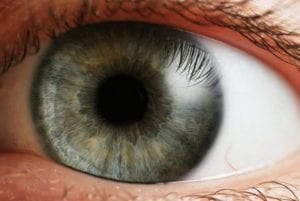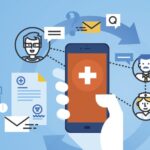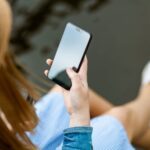A team of researchers at the University of California San Diego is working on a novel system that is attempting to use smartphone cameras to diagnose neurological conditions. The app builds on recent research that suggests that changes in pupil size could reflect what is going on in someone’s brain.

At the most basic level, that means that someone’s pupils could change when they are trying to solve a difficult problem, or if something catches them by surprise. The theory, however, is that those changes could also be linked to neurological conditions like Alzheimer’s and ADHD. That means that the pupil tracking system could help doctors diagnose mental disorders more consistently, and earlier than they would have been able to do so otherwise.
In practice, the app takes advantage of the RGB selfie camera and the infrared camera that now comes standard in many modern smartphones. Infrared cameras were first added to smartphones to support facial recognition, but that same technology can be used to measure pupil size, regardless of eye color. The results are accurate at the sub-millimeter level, and account for the distance between the camera and the individual.
The researchers are hoping that people will be able to use the app to self-administer pupil response tests at home. As it stands, a pupil response test requires the use of an expensive piece of equipment known as a pupillometer, which means that the test must be conducted in a clinical setting. The app would make the test far more affordable (and far more accessible), since it leverages technology that is already in the consumer’s hands.
“While there is still a lot of work to be done, I am excited about the potential for using this technology to bring neurological screening out of clinical lab settings and into homes,” said UC San Diego Ph.D. student and first paper author Colin Barry. “We hope that this opens the door to novel explorations of using smartphones to detect and monitor potential health problems earlier on.”
The app rivaled the pupillometer in terms of accuracy, and the researchers are already trying to figure out how to bring the same utility to older generations of smartphones. They also want the app to be user-friendly, and have added features like voice commands, image-based instructions, and a plastic scope to make sure that everyone can figure out how to administer their own tests. Those features were designed and tested with older adults, who are at higher risk of Alzheimer’s and who may not be familiar with newer technologies.
The researchers are presenting their paper at the ACM Computer Human Interaction Conference on Human Factors in Computing Systems in New Orleans, which will wrap up on May 5. A separate team of researchers from FDNA and the University of Bonn are also trying to use facial biometrics to diagnose rare genetic conditions.
Source: Science Blog
–
May 4, 2022 – by Eric Weiss








Follow Us